ssp. cerdo Linnaeus, 1758
Subfamilia: CERAMBYCINAE / Tribus: CERAMBYCINI
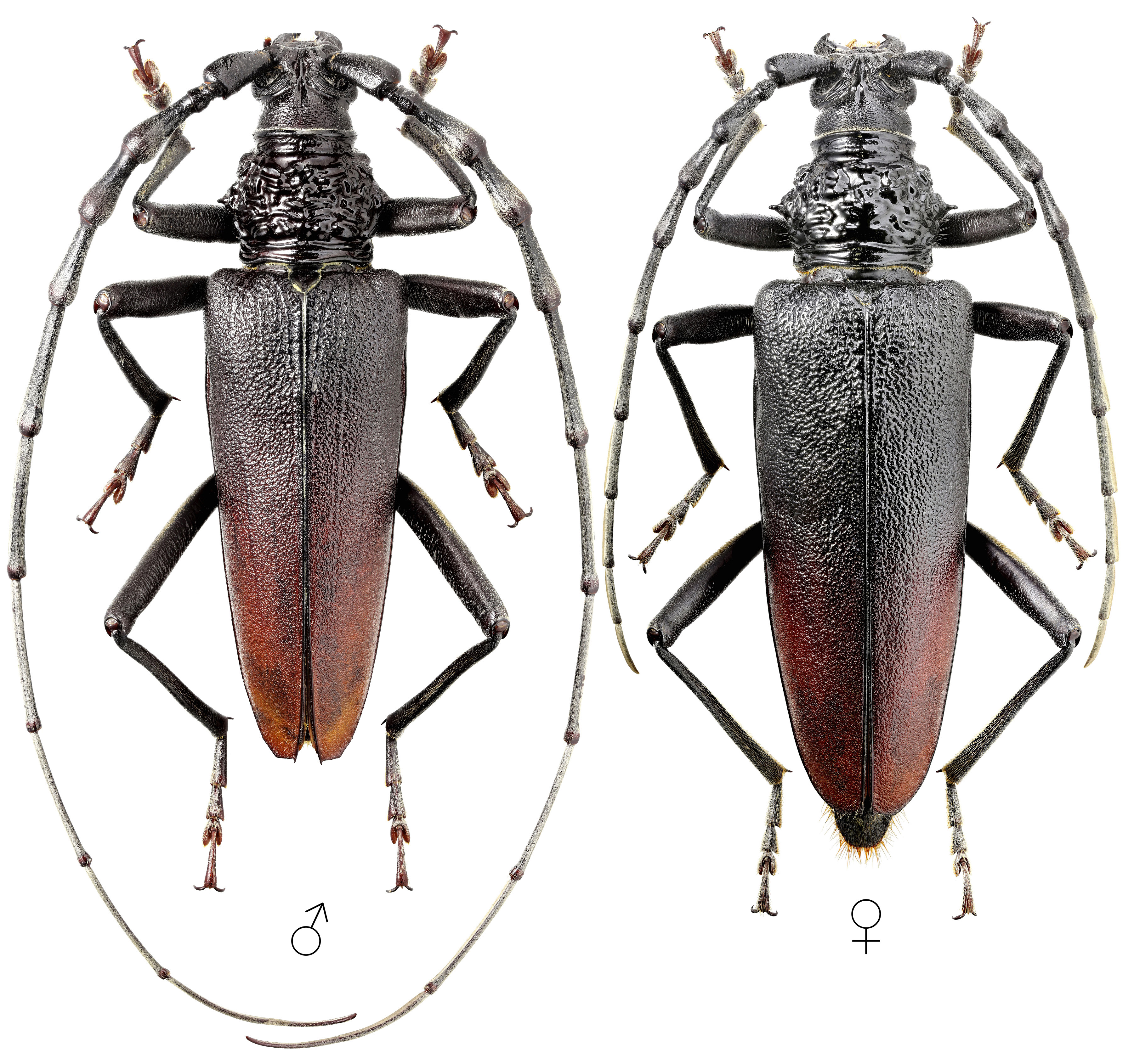
[Photo © Kirill V. Makarov, click on the picture for 4K resolution]
Cerambyx cerdo cerdo, widely distributed in Southern and Central Europe, is generally associated with oak forests where there are mature or partially dead and sun-exposed trees. Its European populations are currently threatened by forest practices such as the removal of partially dead trees and the decline in the number of old oak trees situated in open or semi-open landscapes. C. cerdo cerdo is a polyphagus species that usually lives in deadwood of standing living veteran oak trees (Quercus spp.) and other deciduous trees (Castanea sativa, Juglans regia, Fraxinus spp., Salix spp., Ulmus spp., Fagus sylvatica, Platanus spp., Prunus spp.). Occurence of this beautiful longhorn beetle in semi-open wood stands match with the habitat requirements of many others endangared and rare European Cerambycid species (e.g. Trichoferus pallidus, Clytus tropicus, Isotomus speciosus...).
The development of C. cerdo cerdo mainly takes place in wood of living or dying oaks (Quercus spp.) and lasts about 3-4 years, producing an irregular pattern of larval galleries. During the first year, the larvae feed under the bark layer, while in the second year, they move deeper into the wood. Larval development was observed not only in tree trunks but also inside large branches. Larvae, after completing their development, bore a last tract of gallery directed toward the surface of the trunk and then back into the tree, where they are protected by any contact with the external environment; here, pupation occurs generally during May or June. The adult remains inside the pupal cell or close to the exit hole until the following spring. During spring and summer, adults emerge from colonised trees by producing large and ellipsoidal exit holes into the bark. The wood is perforated by deep, broad and winding galleries and emergence holes are characterised by their large size and oval shape (length 3 cm, width 1.5 cm on average). In Central Europe, the species usually infests Q. robur or Q. petraea, but in South Europe it also develops in Q. pubescens, Q. ilex, Q. suber and Castanea sativa. Although suitable trees have a sun-exposed trunk with at least 60 cm in diameter, C. cerdo cerdo also attacks relatively younger trees of smaller diameter (ca 30 cm). More about biology of the species in the dedicated page.
[Excerpted, modified and shortened from ❖]
Body length: 24 - 55 mm Life cycle: at least 3 years Adults in: May - August Host plant: polyphagous in deciduous trees, in Central Europe only in oaks (Quercus robur and Quercus petraea) Distribution: Serbia, Romania, Poland, Slovakia, Slovenia, Switzerland, Sweden, Spain, Italy, Croatia, Bulgaria, Austria, Czechia (Bohemia, Moravia), France, Hungary, Greece, Germany, Albania
The mounted specimens come from historical collections - the male was collected by Zhikharev in Căpriana monastery (Каприянский монастырь) environs, Bessarabia Governorate, Russian Empire (currently: Căpriana, Strășeni District, Moldova) on July 28, 1911; the female was collected by M.Rosner in Feilenforst bei Geisenfeld (Pfaffenhofen an der Ilm district, Bavaria, Germany) on June 5, 1936.The living female (CZ), photographed by Milan Lovětínský, emerged from larva found in oak firewood in Lány environs (Central Bohemia, Czechia). The depicted living male (PL) was found in Las Bielański (Warszawa, Masovian voivodeship, Poland) by Adam Woźniak in June 2011. The living males (CZ) were photographed by Daniel Rydzi in Břeclav environs (South Moravia, Czechia) in June 2014/2016.
[❖]
Redolfi De Zan L., Bardiani M., Antonini G., Campanaro A., Chiari S., Mancini E., Maura M., Sabatelli S., Solano E., Zauli A., Peverieri G.S., Roversi P.F.:
Guidelines for the monitoring of Cerambyx cerdo.
Nature Consevrvation 20 (4): 129-164, 2017. [download]
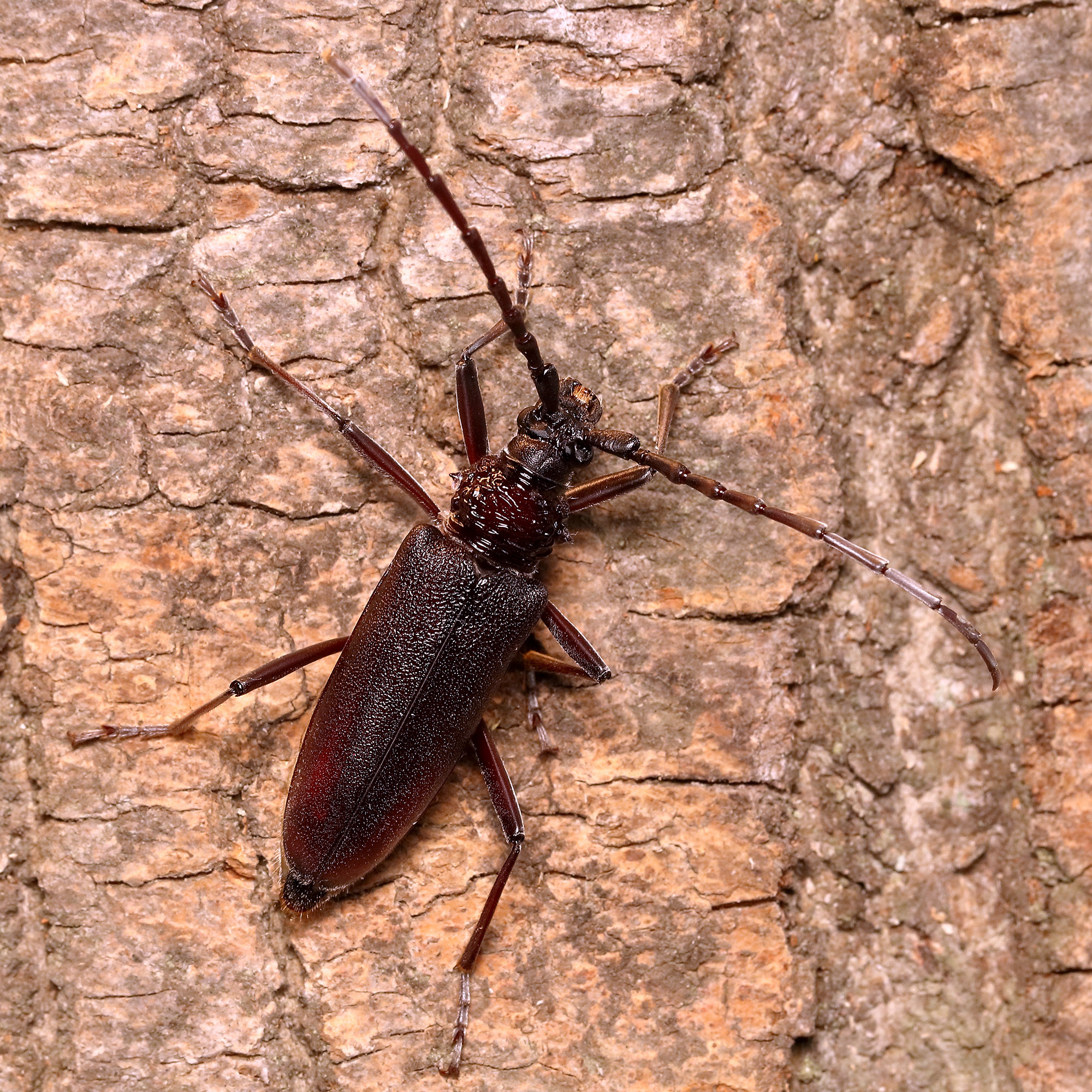


Cerambyx cerdo cerdo ♀ CZ [Photo © Milan Lovětínský]
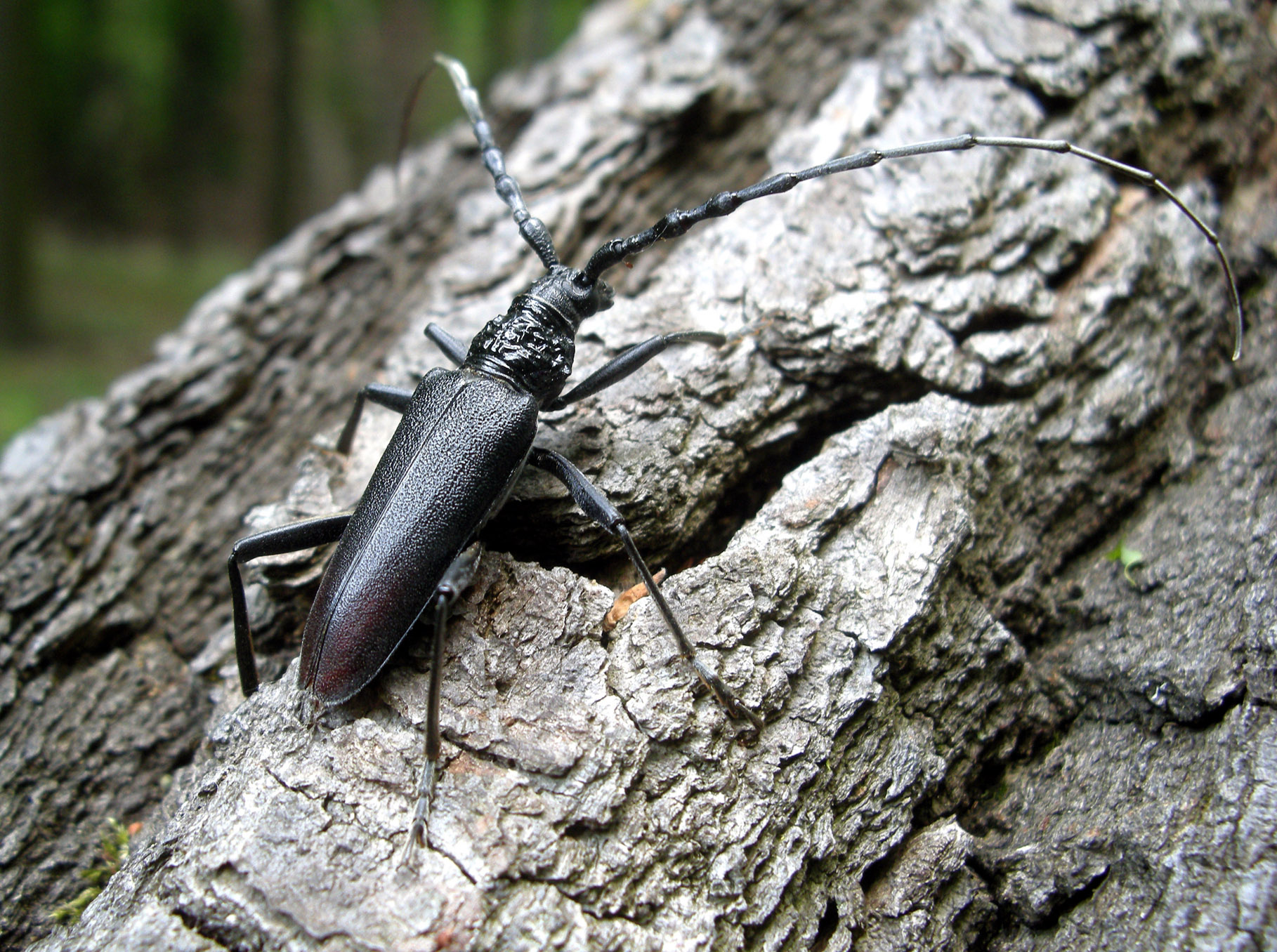
Cerambyx cerdo cerdo ♂ PL [Photo © Adam Woźniak]
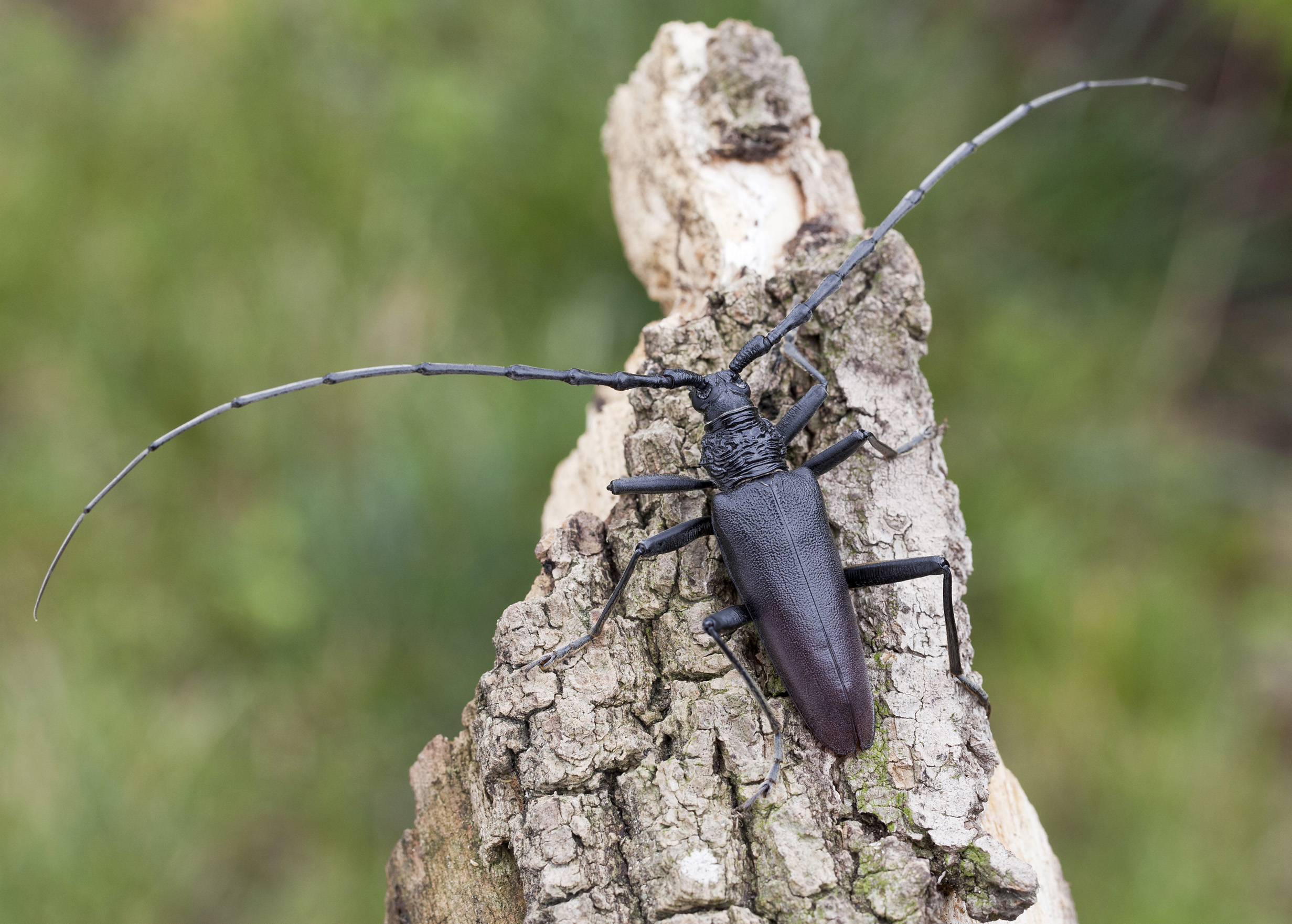
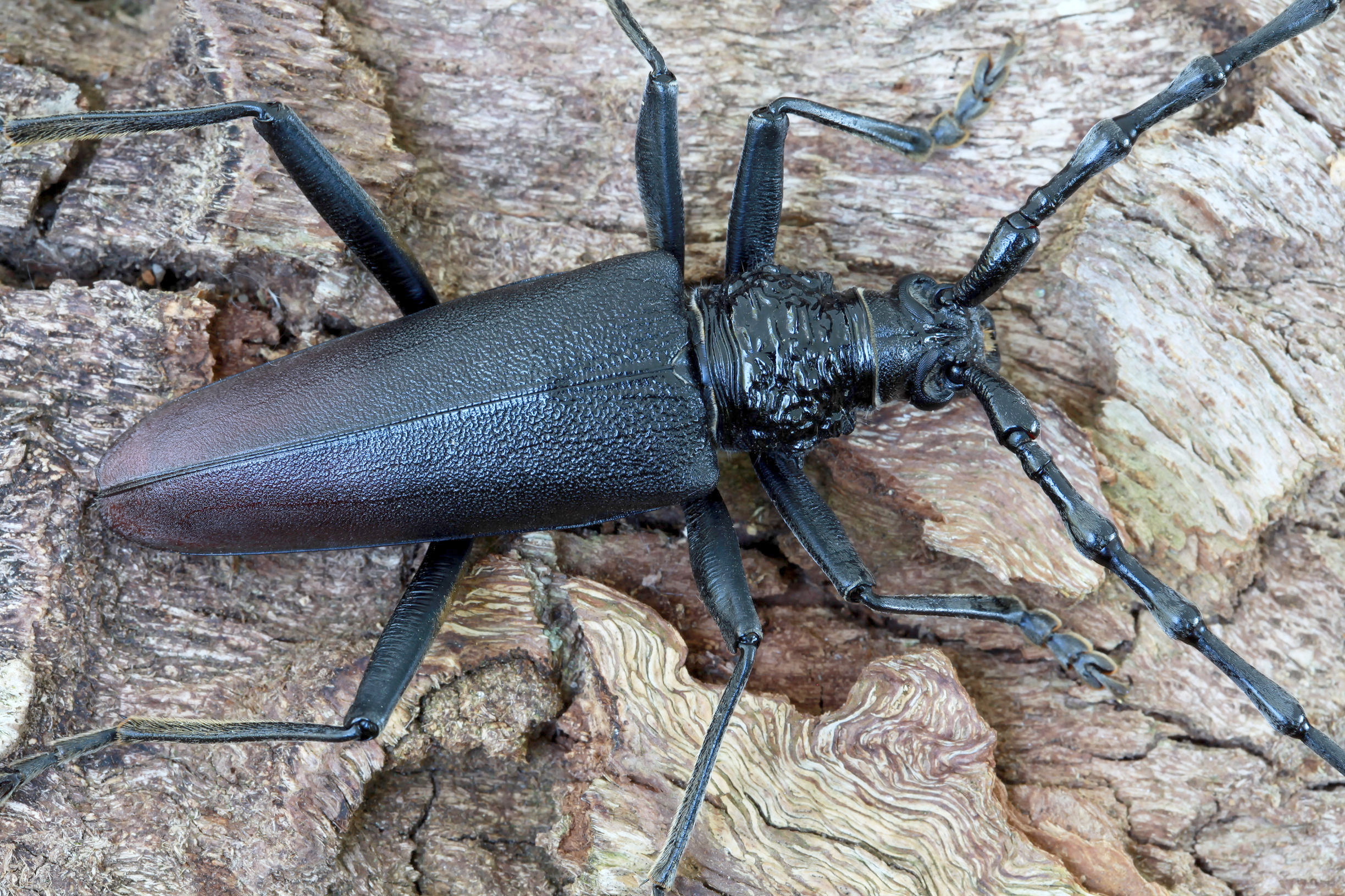
Cerambyx cerdo cerdo ♂ CZ [Photo © Daniel Rydzi]
| Subfamilia | Cerambycinae Latreille, 1802 |
| Tribus | Cerambycini Latreille, 1804 |
| Genus | Cerambyx Linnaeus, 1758 |
| Subgenus | Cerambyx Linnaeus, 1758 |
| Species | Cerambyx (Cerambyx) cerdo Linnaeus, 1758 |
| Subspecies | Cerambyx (Cerambyx) cerdo cerdo Linnaeus, 1758 |
